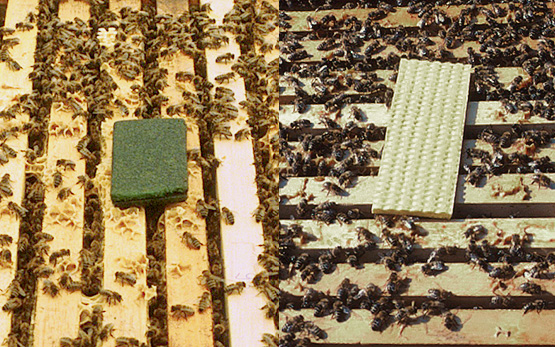Background: The species richness of semi-natural pastures, formed by grazing livestock over centuries, is endangered by the structural change in agriculture. In recent decades, human artificial selection formed cattle breeds with enhanced milk or meat production and these high-productive breeds account for a majority of cattle today. However, the increased productivity came along with increased requirements, for example a high nutritive demand. Therefore, high-productive cattle are reared on the agriculturally best pastures, whereas nutrient-poor, marginal grasslands are underused. Both, intensification as well as abandonment, reduce the biodiversity of marginal pastures. However, besides high-productive, modern cattle, there are traditional breeds nearly untouched by output-oriented breeding and thus, less productive. Apart from breeding aims easy to quantify, such as milk and meat yield, little attention was paid to breed characteristics which possibly co-evolved unnoticed during the breeding process, such as anatomy, movement and foraging behaviour. Such hidden traits could have a lasting effect on plant species composition of pasture vegetation. This thesis, therefore, aimed at estimating differences between low- and high-productive cattle breeds, quantifying their long-term impact on pasture vegetation and analysing their suitability for the maintenance of species-rich, marginal grasslands. Methods: Two different approaches were used: (1) An observational study along a broad environmental gradient from Southern Germany to the Swiss Alps examined the vegetation composition of highly comparable paired pastures, either grazed by high- or low-productive cattle breeds for years. (2) A controlled grazing experiment compared three cattle breeds representing a gradient from low to high productivity. On high-elevation summer pastures in the Swiss Alps, the drivers of forage selection were analysed at plant species level. In addition, anatomy, movement and foraging behaviour of cattle and their allometric relationships were evaluated. In all setups, Highland cattle were chosen as model for low-productive breeds. High-productive cattle were not restricted to a single breed in the observational study and represented by Original Braunvieh (intermediate productivity) and Angus×Holstein crossbreed cattle (high productivity) in the controlled grazing experiment. All experimental animals were suckler cows with calves. Results: High- and low-productive breeds differed significantly in anatomy, movement and foraging behaviour as well as in their long-term impact on pasture vegetation: (1) High-productive breeds were significantly heavier than low-productive breeds and their claws were relatively small. Subsequently, more body mass burdens the ground and promotes trampling-adapted plant species. Thereby, the vegetation composition was influenced: significantly more trampling adapted plant species were found on pastures grazed by high-productive breeds. Additionally, the trampling pressure of high-productive breeds was amplified by their movement behaviour: The more productive a breed was, the more it moved and thereby, the more frequently it exposed destructive kinetic energy to the ground. (2) Forage selection was also influenced by productivity. The more productive a breed was, the more selective it foraged, i.e. the more it cared about plant traits: Plants protect themselves from being consumed by low nutrient content, physical and chemical defence mechanisms (e.g. spines and toxins) or woodiness. High-productive breeds preferred attractive forage plants and avoided unattractive plants more clearly than low-productive breeds. Since high-quality forage plants can be far from each other on heterogeneous pastures, highly selective cattle had to walk longer distances than low-productive cattle while foraging. Thereby, they consumed a diet of higher forage quality. The enhanced selectivity of high-productive breeds influenced plant species composition: A higher share of grazing-adapted species spared by cattle were found on pastures of high-productive breeds. (3) The enhanced trampling pressure and selectivity decreased plant species richness, because species highly adapted to trampling or grazing outcompete less resistant plants. Consequently, the species richness was lower on pastures of high-productive cattle breeds. The longer a pasture has already been grazed by low-productive Highland cattle, the clearer was the contrast to pastures of high-productive breeds. Additionally, vegetation grazed by low-productive Highland cattle for long, had a higher share of epizoochoric and lower abundance of woody species. Both contributed positively to the plant species richness. (4) Although low-productive Highland cattle chose a diet of lower quality, they gained weight on the nutrient-poor alpine pastures, whereas the more productive breeds lost weight. The energy-saving movement behaviour and a presumably better conversion of fibre-rich fodder made them more efficient under harsh environmental conditions than so-called high-productive breeds. Conclusion: Besides desired characteristics, modern breeding unintentionally changed hidden traits of cattle’s anatomy, movement and foraging behaviour. Thereby, breeding modified not only the cattle themselves, but also the vegetation grazed by these animals. Low-requirements and high efficiency give low-productive cattle breeds a key position in maintaining nutrient-poor, species-rich pastures.











